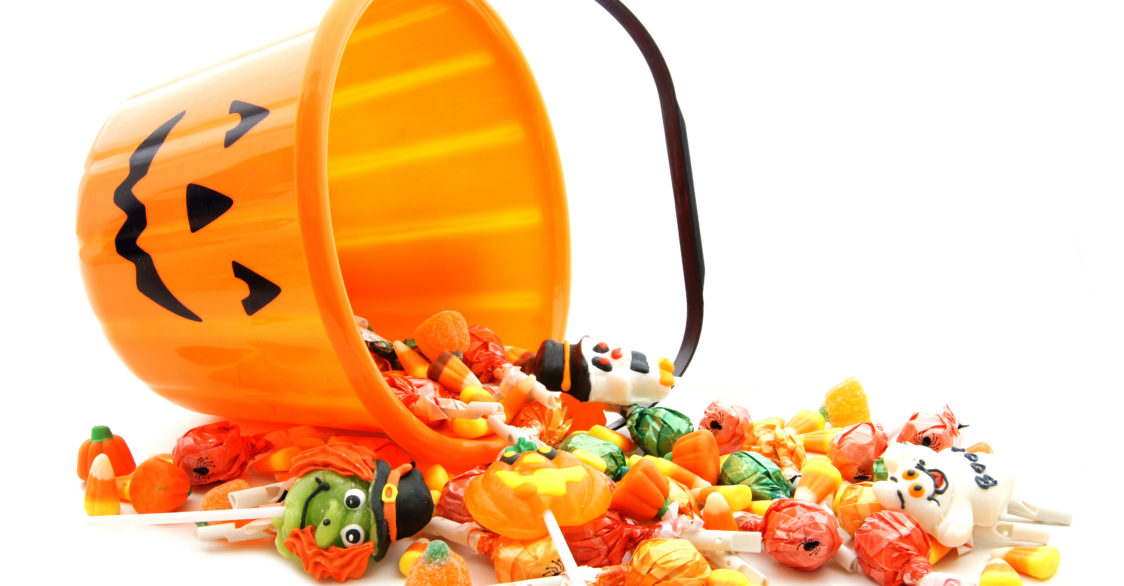It seems the quickest way to bring the “trick” back into trick-or-treating is to hand an apple or a box of raisins to a horde of candy-crazed Mutant Ninja Turtles at your door.
But if you’re willing to risk an egging or an assault on your jack-o’-lantern, health experts say you can help make a stand against the monstrous problem of sugar addiction.
The facts are undeniable. Sugar isn’t the healthiest choice, and no holiday is more bathed in sweets than Halloween. It’s all about the candy. According to Loyola Medicine, an average trick-or-treat haul contains 4,800 calories and three cups of sugar. That is enough to spin out your average defensive tackle, so imagine what it can do to an 8-year-old.
Candy is also pretty tempting for adults, but nature works against children when it comes to a taste for sugar. While children have the same number of taste buds as adults, their tongues are much smaller, making the flavors more intense.
“Sugary, fatty, salty foods … do a number on your brain, which can be seen by PET scan,” says Pamela Peeke, senior science advisor at Elements Behavioral Health. A highly cited study out of Connecticut College found that Oreo cookies activate the brain’s reward center as much as cocaine, at least in rats. In fact, the researchers found Oreos stimulated many more neurons than cocaine or morphine. (Interestingly, the rats were particularly fond of the sugar-dense filling of the Oreo.)
In another study, a shaking paw provided the clue that a four-legged lab subject had been converted into a sugar addict. Princeton researchers found that withdrawal from sugar causes signs of drug dependence in rodents similar to those exhibited by someone going through heroin withdrawal. Teeth-chattering, forepaw tremor and head shaking were seen in animals deprived of sugar after a binge.
Studies show the average American eats about a third of a pound of sugar every day – 130 pounds a year – and almost 40 percent of children’s diets now come from added sugars and unhealthy fats. According to the U.S. Centers for Disease Control, in 2012, more than one-third of children and adolescents were overweight or obese, and obesity kills more Americans every year than AIDS, all cancers and all accidents combined.
In the spirit of Halloween, John Oliver, on Sunday’s installment of “Last Week Tonight” on HBO, showed just what sugar is doing to our brains. A lab rat eating a normal rodent diet was placed in a vat of water with a small island in the middle and, within seconds, the rat located the island, swimming to safety. Then another rat, which had received a typical sugar- and fat-laden North American diet, was placed in the vat and swam in circles, at one point missing the island by inches. Being the host of a comedy show, Oliver suggested that maybe the rat wasn’t as disoriented as it seemed. “There’s no sugar on that island!” he said, acting like a cocaine addict desperate for more drugs. “I want sugar! I want sugar!”
That is definitely the sentiment most of us will face on our front porches this Halloween. But rather than continue filling those bags with the increased danger of diabetes, obesity and heart disease that comes with candy and other sugary treats, how about considering some of these more healthful Halloween goodies:
- Sugarless gum (studies show chewing it after meals reduces tooth decay)
- Different flavors of popcorn
- Low-sugar cookies from health food stores
- Halloween-themed bags of baby carrots (BabyCarrots.com has packaged them as Scarrots)
- Goldfish crackers
- Individual cups of applesauce
- Halloween-themed school supplies. There are pencils, stickers, markers and even a Halloween Crayon Treat Pack from Crayola.
- Plastic vampire teeth, temporary tattoos, Play-Doh, glass beads and glow sticks can be found at local dollar stores.
Of course, let’s be serious. Your kids will inevitably bring home candy this Halloween. So, try using the holiday as an opportunity to teach self-restraint. You don’t need to completely deny your children treats, but talk with them about good eating habits and the trap they may fall into when eating too much sugar.
Some parents take advantage of the offer made by many dentists to buy Halloween candy. There are also organizations that collect candy and ship it to troops serving overseas, and many households engage in candy buybacks, swapping candy bars and Skittles for toys.
Whether you use the opportunity to teach your children about moderation or opt for pure bribery, it is important that kids learn to understand that the true monster lurking in the autumn darkness can most likely be found at the bottom of their Halloween bags.









